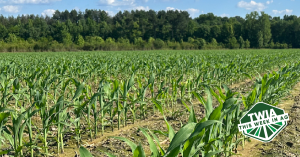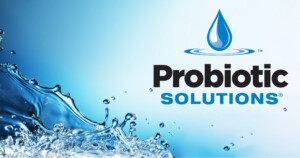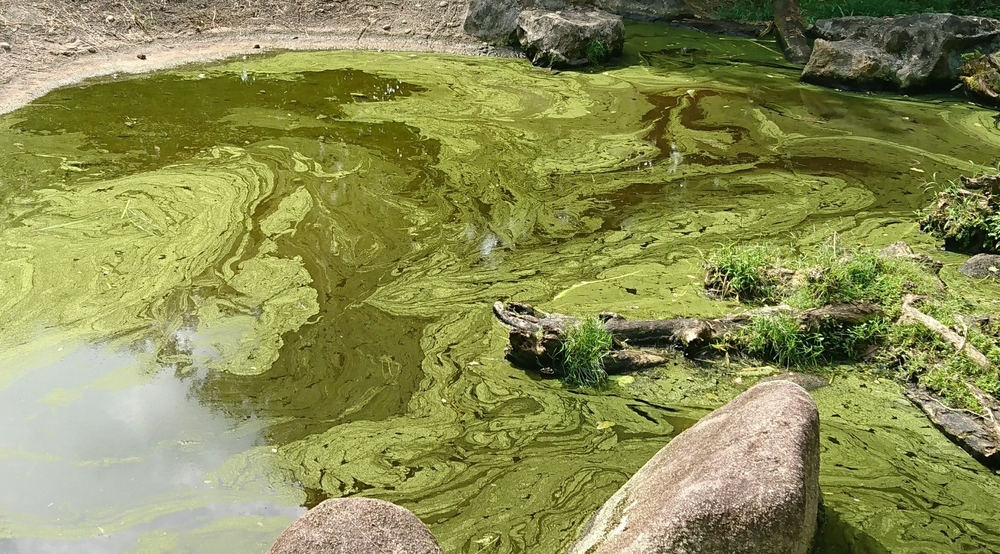Eutrophication is the structural change of water ecosystems that is caused by excess nutrients. Eutrophication results in algal blooms and poor water quality.
By Jael Batty
In this article, we discuss what causes eutrophication, how it affects the environment, and how it is treated.
What Is Eutrophication?
Eutrophication is characterized by the increase of plant or algae due to an escalation of one or more growth factors necessary for photosynthesis: sunlight, carbon dioxide, and/or nutrients.
As the presence of nitrogen and phosphorus nutrients––also known as organic load––increase, it surpasses the capacity of the water to purify itself. An abundance of these nutrients––particularly phosphate––encourages quick growth of plants and algae. The rapid growth of algae is known as an algae bloom.
Slow eutrophication is a natural process that happens in all water bodies. The recent and continued occurrence of rapid eutrophication is an environmental issue that affects water quality.
What Causes Eutrophication?
Cultural practices and environmental factors cause eutrophication.
- Sediment. Over time, water bodies accumulate silt and sediments that have absorbed large amounts of nutrients. As a water body fills with sediment, the interaction between the water and the sediment increases, mixing the nutrients with the water. This is a natural process that is hastened by erosion. Construction and demolition increase sediment and erosion.
- Agriculture. Farmers use a high concentration of nitrogen and phosphate fertilizers, which contribute to rapid growth in plants. Rain and stormwater carry excess nutrients into groundwater and local water bodies. Erosion exacerbates the leaching of nutrients into water sources.
- Wastewater. Human waste, household cleaning products, and soaps contain nitrogen and phosphorus. Nitrogen and phosphorus pollution can stem from the release of treated wastewater into local water bodies. Overflow events––caused by storms and flooding––sometimes wash these nutrients into water bodies in the form of raw sewage.
What Are the Consequences of Eutrophication?
With eutrophication, excessive nutrients encourage the rapid growth of algae and plants. The resulting increase in photosynthesis uses up dissolved inorganic carbon and increases pH to extreme alkaline levels. A highly alkaline pH impairs the chemosensory abilities of organisms that rely on chemical cues for their survival, essentially blinding them to predators.
Additionally, algae that grow uninhibited form a progressively large biomass that then dies off. When algae blooms die off, the microbial deterioration exhausts dissolved oxygen levels, creating hypoxic or anoxic conditions. As more and more algae grown, the lack of oxygen reduces biodiversity, causing plants and animals to die. This is compounded during the summer when oxygen concentrations are already low.
Algae blooms cause:
- high pH
- low oxygen
- death of plants and animals
- low light
- blue-green algae
What Is Blue-Green Algae?
Blue-green algae, also known as cyanobacteria, thrive in the low light, anoxic conditions caused by algae blooms. Most blue-green algae blooms occur in ponds, lakes, and slow-moving streams during the summer months, when the water is warm. However, blue-green algae also grow in the sea. As its name suggests, blue-green algae are a blue-green color, but can also be red or brown. Blue-green algae are buoyant and forms floating mats that people mistakenly think of as pond scum. Because it can be suspended at different depths, blue-green algae may grow unnoticed until it rises to the surface where it seems to have appeared overnight.
Also known as harmful algal blooms (HABs), cyanobacteria produce toxins that are harmful to fish, animals, and humans. As blue-green algae die off, these toxins leak from deteriorating cells into the environment. There are many different species, and large blooms have the potential to produce several different toxins.
Blue-green algae can cause:
- depleted oxygen levels
- death of fish, wildlife, and livestock
- dead zones in the water
- eye and skin irritation, nausea, vomiting, and muscle cramps in humans
- bad smelling water
- bad tasting water
- elevated water treatment costs
How Is Eutrophication Treated?
Treating surface water with herbicides can kill algal blooms. However, the resulting death of blue-green algae releases a large number of toxins into the surrounding water. It is critical to stop the phosphorus pollution at its source. This may mean spoon-feeding fertilizers, requiring silt curtains at construction sites, and growing native plants along shorelines to buffer runoff. Other controls for water affected by eutrophication include:
- removal and treatment of water that is in contact with nutrient-rich sediment
- removal of sediment
- removal of phosphorus by the addition of iron or aluminum salts or calcium
- removal of toxins from water through the use of chemicals
- mechanical removal of the algae
- addition of oxygen into the water
- biological controls
Conclusion
Eutrophication resulting from nutrient-rich sediment, wastewater, and fertilizers causes algal blooms that are harmful to the environment and to humans. It’s critical to our global water quality that we stop the excessive nutrients from reaching water sources.
Have you experienced an algae bloom? How was it treated? What proactive steps were taken?
If you liked this blog article, be sure to stop back at a later date to read our next blog article about phosphate removal.
Related Posts

This Week in Ag #66
When asked if he was finished with planting, dad would frequently respond by saying, “the first time.” His cynicism aside, replant decisions can be difficult. This year, too many growers are faced with that decision. If you plant when the soil is cold and wet, you’re inviting problems. But even if you plant in good soil conditions,...

Get the “P” Out of There!
By Heather Jennings, PE Phosphorus is one of the most abundant elements on earth. It’s essential for adenosine triphosphate (ATP), the energy carrier life is built on. But in excess in our lakes and ponds, we see large algal growths occurring. Many times, these algal blooms suffocate the surrounding aquatic life and or produce toxins...



